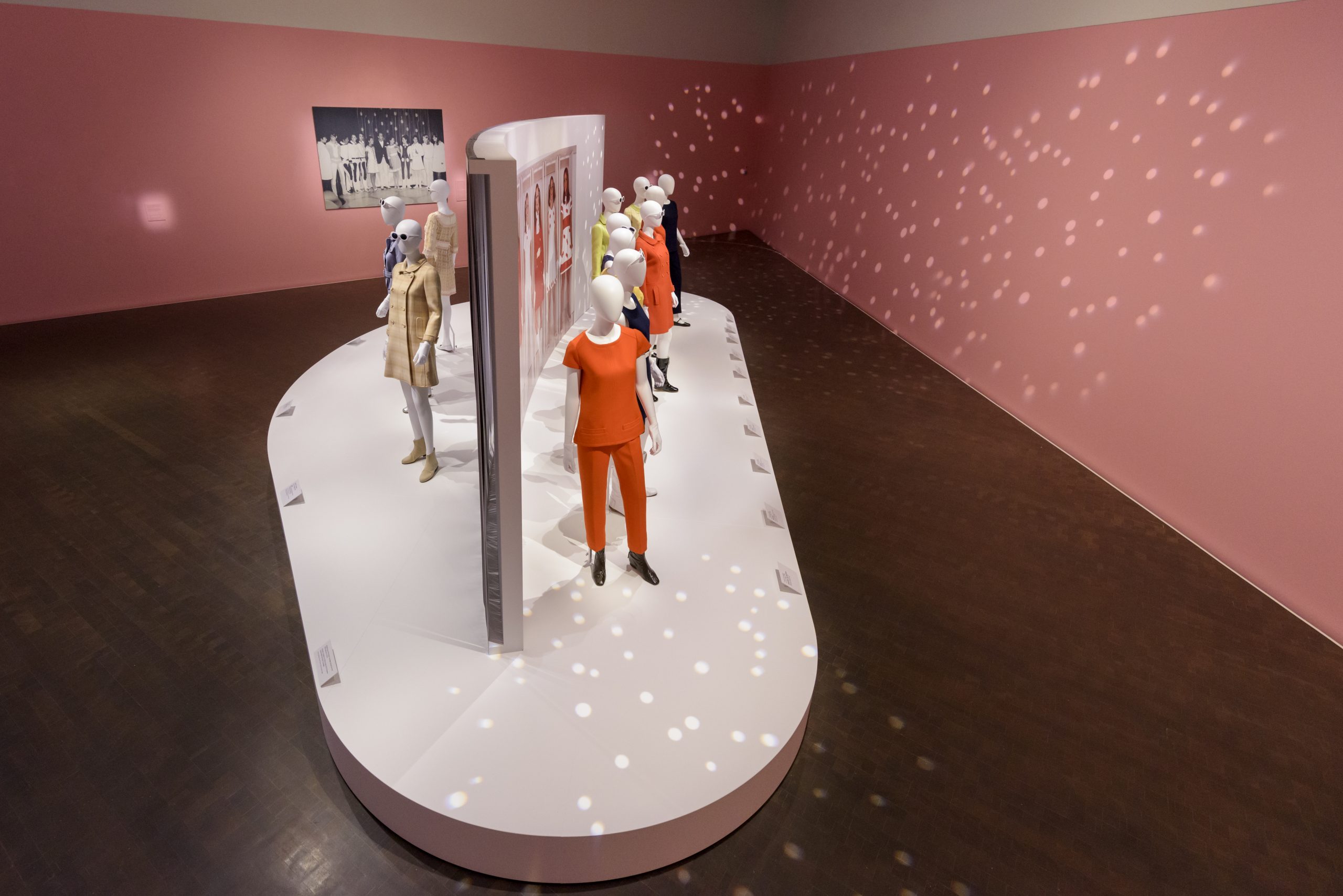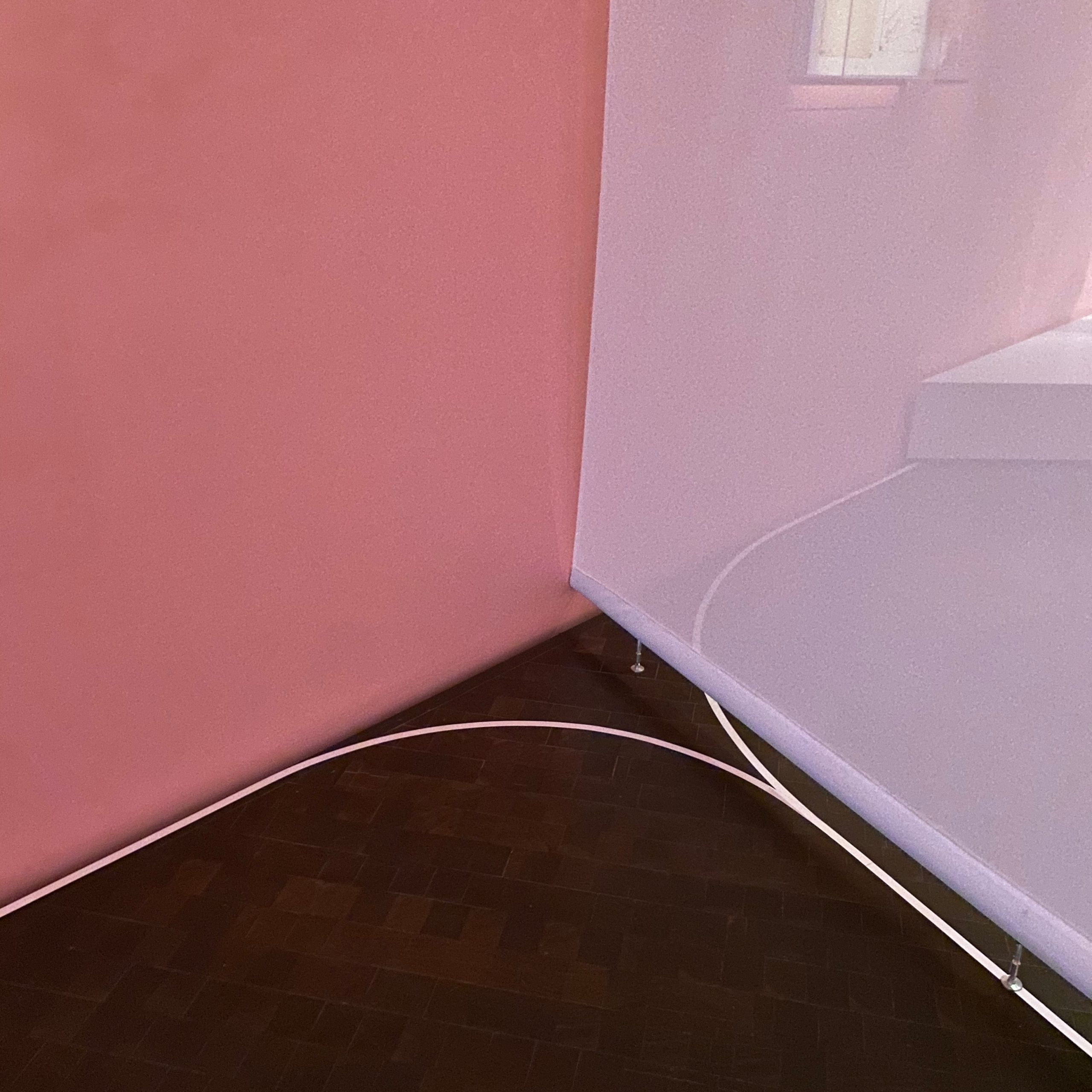But the gallery also posed some unique challenges. For all exhibits housed in the Anschutz gallery, one of the biggest challenges is working around a prominent double-door emergency exit, which for safety reasons, is not easy to disguise. “It was tricky because you can’t block it, but nobody wants to look at it, especially as the first thing when you walk in [to the final room]” says Meredith. In the end, Sort Studio settled on a cleverly placed projection screen, which draws your attention down and away from the “Exit” sign and shields the doorway from view, without obstructing its vital function.
The show, which opened in April and will run through mid-July, has been incredibly well-received and both Sort Studio and curator Florence Müller have only positive things to say about how it all turned out. “Sort Studio found a perfect way to translate the common line between Paris and Hollywood in the curvy and pure structure, both feminine and contemporary, light and full of surprise,” says Müller. “Their set design translates the elegance of Véronique Peck: simple but sharp, glamorous but never too showy.”
With one successful partnership with the Denver Art Museum under their belts, Meredith and Brian are grateful for the creative freedom they were given for the project and the collaborative insight of Müller who understood their vision and was willing to take risks. “We are also working on some new projects that will be part of the Martin Building reopening in the fall that we can’t wait to unveil,” says Meredith. “The museum environment is an ideal place to quickly test ideas, materials, and forms that will find their way into our more permanent works.”

